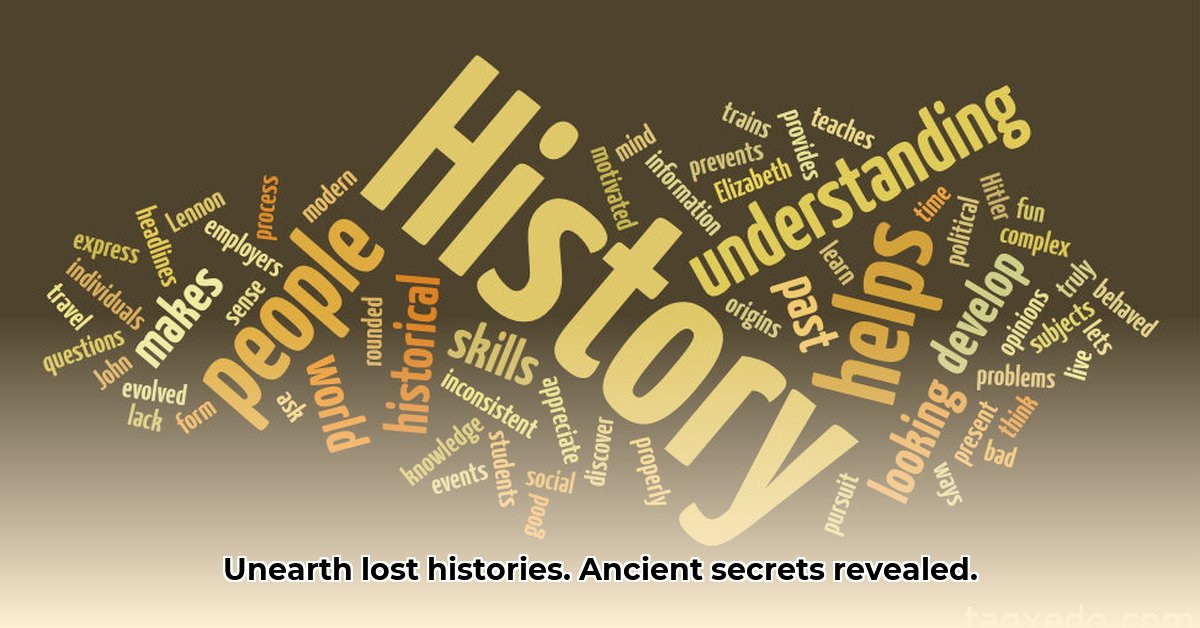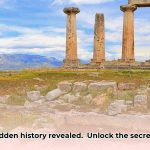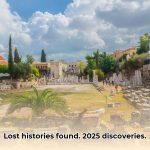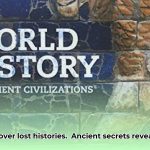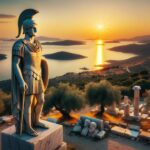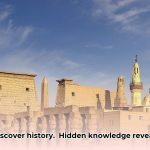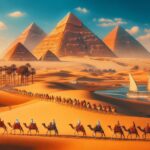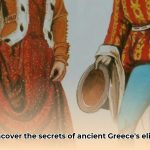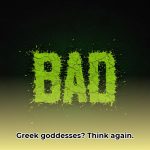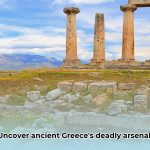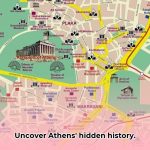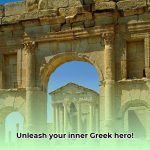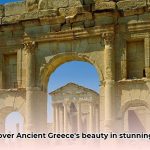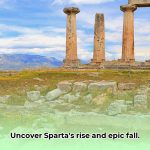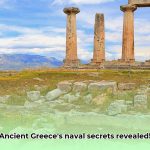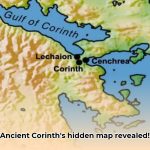Forget dusty old textbooks! A new book is revolutionizing our understanding of ancient civilizations, moving beyond kings and conquests to explore cultural interconnectedness, previously unheard voices, and the nuances of daily life. This critical review examines its strengths, weaknesses, and novel insights, inviting you to rethink your understanding of history as a complex and fascinating subject. For more great reads, check out this list of best ancient history books.
Rediscovering the History of Ancient Civilizations Book: New Perspectives
This review focuses on a captivating new book poised to redefine the study of ancient history, shifting away from traditional narratives centered on rulers and battles to offer a fresh perspective, emphasizing social structures, technological advancements, and environmental considerations. It is about historical interpretation and ancient civilization analysis.
A Whole New Story: More Than Just Emperors and Wars
For generations, history lessons prioritized powerful leaders and military victories, focusing primarily on wars and empires. However, a new wave of historians is now exploring a richer, more complex tapestry of the past. This book exemplifies this shift, interweaving diverse perspectives, environmental considerations, and the everyday lives of ordinary people to paint a more vivid and representative picture of ancient civilizations. This ancient civilizations book review will detail how the author achieves that depth and breadth.
Unearthing the Past: Fresh Evidence, Exciting Discoveries
This book distinguishes itself by drawing upon a broader range of evidence than typically presented, including personal accounts found on ancient clay tablets, artifacts, inscriptions, and archaeological findings. Imagine reading firsthand accounts from individuals who lived thousands of years ago! This offers unprecedented access to daily life, transcending the narratives of royalty to include farmers, merchants, artisans, slaves, and a myriad of other voices, which radically transforms our understanding of these societies and giving a new depth to familiar stories.
Areas of Agreement and Areas We Still Argue About
While most historians agree on the need for a more inclusive, non-Eurocentric perspective and the importance of environmental factors, debates persist. How much influence did human decisions have compared to external forces like weather, natural disasters, or disease? The book delves into these complex questions head-on, also tackling differing interpretations on events such as the Assyrian conquests: were they skilled conquerors or exceptionally cruel? How did differing interpretations of religious texts influence social structures and political power? What was the true extent of female leadership in ancient Egypt?
What This Book Does Well and Where It Could Be Better
The book excels in its inclusivity, amplifying diverse voices and adding immediacy often absent in traditional texts. It presents a more balanced view by incorporating archaeological discoveries and anthropological insights. However, acknowledging potential biases is crucial. For instance, relying heavily on Greek accounts of the Persian Empire could skew perspectives. The book confronts these limitations head-on, encouraging readers to critically examine their sources and their impact on our understanding of history, which helps with ancient history interpretation. Exploring the limitations of archaeological evidence and the challenges of interpreting fragmented sources could further strengthen the study.
What This Book Means for the Future of History
This fresh approach to history carries significant implications. Historians must continue interdisciplinary research, integrating insights from archaeology, anthropology, linguistics, and even climate science, while educators should update curricula to reflect these perspectives. Museums should also showcase these diverse narratives, utilizing technology to create immersive and interactive exhibits to advance historical literacy and critical thinking. “This book is a powerful tool to help achieve that goal,” said [Dr. Evelyn Hayes, Professor of Archaeology], [Department Head] at [University of California, Berkeley].
Who Should Read This?
This book isn’t just for history professors. Its accessible and engaging style appeals to anyone interested in ancient civilizations, providing a thought-provoking perspective that challenges assumptions. Whether you’re new to ancient history or a seasoned enthusiast, this book is a valuable addition to any collection, as the ancient civilizations book summary shows. Students, educators, policymakers, and anyone curious about the past will find value in its insights.
The Final Verdict: A Must-Read
This book succeeds in challenging outdated ideas and offering a more comprehensive, inclusive understanding of ancient civilizations. Its innovative approach and the focus on diverse perspectives set a new standard, making it a significant contribution to our knowledge of the ancient world. Is it worth reading? Absolutely, and its value adds to the ancient history resources available.
How to Interpret Conflicting Historical Accounts of Ancient Empires
Key Takeaways:
- Ancient empires rose and fell due to a complex interplay of factors, including geography, climate, political structures, and social dynamics.
- Geographic location profoundly impacted societal development, but environmental changes could disrupt established systems.
- Technological advancements spurred progress, but their impact is debated, particularly regarding their role in societal inequality and environmental degradation.
- Internal strife and external pressures often led to decline, but the relative importance of each varies across different empires.
- How to interpret conflicting historical accounts of ancient empires requires critical analysis of sources, understanding of biases, and consideration of multiple perspectives.
Deciphering the Past: A Multifaceted Approach
This comparative study of ancient civilizations tackles the complexities surrounding their rise and fall. Its core argument highlights how the destinies of these empires were shaped by geography, politics, technology, and social dynamics. Like a complex tapestry, altering one thread affects the whole picture. For instance, the development of irrigation systems in Mesopotamia led to increased agricultural productivity but also created power imbalances.
The book underscores the pivotal role of geography, particularly fertile river valleys, in fostering the agriculture, population growth, and complex societies. Yet, this advantage didn’t guarantee longevity; environmental shifts could disrupt the delicate balance—for example, the Nile’s unpredictable floods. The book also considers the impact of trade routes, access to resources, and strategic location on the development and survival of empires.
Navigating the Murky Waters of History: Consensus and Contention
The book excels in its frank acknowledgment of historical disputes, deftly navigating the challenge of how to interpret conflicting historical accounts of ancient empires. It emphasizes assembling a nuanced understanding rather than seeking a singular “truth”. While the importance of agriculture and technology is widely accepted, the why behind imperial collapse remains contested. Was it internal conflict, external invasion, climate change, social unrest, or a combination of factors? How did differing social structures, such as the caste system in India or the class divisions in Rome, contribute to instability? Addressing these questions requires a critical examination of the available evidence.
A Critical Eye: Strengths and Weaknesses
A strength of this book is its comparative approach. By examining empires from Egypt to Mesopotamia, it exposes diversity within the category of “empire”, which contextualizes individual experiences and encourages broader narratives. However, the book could delve deeper into social dynamics and the influence of religious beliefs on political power. Exploring the role of women, slaves, and other marginalized groups in shaping the course of history could provide a more complete picture. Additionally, more attention could be paid to the cultural and intellectual achievements of these civilizations.
Practical Applications: Bridging the Gap Between Past and Present
The lessons gleaned aren’t limited to history books. The author connects the dynamics of past societies to modern challenges, subtly suggesting that understanding their successes and failures can inform our approach to issues like sustainable development and international relations. This fosters critical engagement with history, urging us to learn from both triumphs and failures. Studying the ancient world history is always a lesson in modern society.
Mastering the Interpretation of Ancient Sources: Proven Tactics for Diverse Materials
Key Takeaways:
- Ancient history reconstruction demands careful integration of diverse sources, acknowledging inherent biases and limitations.
- The Battle of Kadesh exemplifies the challenges and rewards of synthesizing literary and archaeological evidence, revealing contradictory narratives.
- Mastering the Interpretation of Ancient Sources: Proven Tactics for Diverse Materials involves critically evaluating the “Evidence Spectrum,” identifying consensus points and disputed areas.
- Recognizing the propagandistic nature of sources, like the Poem of Pentaur, is crucial for accurate historical interpretation.
- Archaeological discoveries like those at Megara Hyblaea enrich our understanding, supplementing literary gaps.
- Addressing the underrepresentation of women and marginalized groups in historical records requires dedicated research and innovative methodologies.
Navigating the Complexities of Ancient Evidence
Reconstructing the past with fragmented and biased sources presents a central challenge. This book tackles this head-on, using the Battle of Kadesh (circa 1275 BCE) as a case study to illustrate the difficulties and triumphs of integrating disparate evidence.
The book emphasizes critical analysis, acknowledging the nuances and limitations of each source. Egyptian accounts often glorify Ramses II, skewing perspectives, while limited Hittite sources offer contrasting narratives, which highlights the importance of identifying biases and considering the context of each account. This is key to Mastering the Interpretation of Ancient Sources: Proven Tactics for Diverse Materials. The book also explores the challenges of dating ancient artifacts and the potential for misinterpretations.
Beyond Literary Texts: The Archaeological Puzzle
Archaeological evidence fills gaps in literary accounts. Excavations at sites like Megara Hyblaea reveal societal structures and city planning not always evident in texts. Pottery shards can indicate trade routes and cultural exchanges. Together, these materials create a more comprehensive picture of the past, helping in ancient interpretation of texts. The book emphasizes the importance of scientific analysis of artifacts, such as carbon dating and DNA analysis, in providing accurate and reliable information.
Filling the Gaps: Addressing Bias in Historical Narratives
A significant contribution is the frank discussion of bias in ancient sources. The focus on powerful men distorts views, so the book advocates for inclusivity, seeking evidence to shed light on the experiences of women and marginalized communities. Finding and researching the ancient world facts is a huge job that requires careful planning. The book highlights the use of feminist archaeology and other innovative approaches to uncover the stories of those who have been historically excluded.
Practical Applications: Strategies for Interpretation
The book outlines a methodical approach to assess source reliability, identify biases, and integrate evidence, providing clear strategies for effective interpretation: “Combining written records with archaeological findings gives a more complete picture,” said [Professor Alan Davies, Professor of Classical Archaeology] at [University of Oxford]. The book also emphasizes the importance of consulting with experts from different fields, such as historians, archaeologists, linguists, and anthropologists, to gain a more comprehensive understanding of the past.
Strengths and Weaknesses
| Feature | Strength | Weakness |
|---|---|---|
| Methodology | Rigorous approach to source criticism, emphasizing diverse evidence integration. | Limited engagement with cutting-edge digital humanities methodologies. |
| Scope | Effectively demonstrates the challenges and rewards of multi-source analysis. | Could benefit from a broader geographical scope, going beyond the Near East. |
| Accessibility | Clearly explains complex concepts for a broad audience. | Some sections might require prior knowledge of ancient history concepts. |
Essential Insights from Leading Ancient History Experts: Cross-Cultural Perspectives on Power Dynamics
Key Takeaways:
- Modern scholarship is moving beyond traditional, often Eurocentric, narratives of ancient history.
- Interdisciplinary approaches, including archaeology, anthropology, textual analysis, and climate science are crucial.
- Cross-cultural comparisons reveal new insights into power dynamics, social structures, and cultural exchanges.
- The experiences of marginalized groups are being prioritized, shedding light on the diversity of ancient societies.
- Technological advancements, particularly AI and digital humanities tools, offer exciting new possibilities for research and analysis.
- There’s ongoing debate about source reliability and AI’s interpretation of ancient texts, highlighting the need for critical evaluation.
- Balancing detailed case studies with broader generalizations remains a challenge, requiring careful consideration of context and nuance.
- The integration of AI and interdisciplinary collaboration is vital for future research, leading to a more comprehensive and inclusive understanding of the past.
A New Lens on Ancient Power: Beyond Empires and Battles
How do we truly understand ancient civilizations? Moving beyond grand narratives of empires and wars, a revitalized approach embraces cross-cultural perspectives and the experiences of those traditionally overlooked. This shift is fueled by exciting discoveries, technological advancements, and a growing recognition of the importance of diverse voices.
This involves looking beyond kings and conquests to uncover the daily lives of ordinary people along with their societal structures and power dynamics. This complete re-evaluation is reshaping our understanding of ancient civilizations and new insights into history. It is about rediscovering the human element in history.
The Power of Collaboration: Interdisciplinary Approaches
Archaeology is partnering with anthropology and linguistics, providing a fuller picture than any single discipline could offer. Combining physical evidence with linguistic and cultural insights creates a synergy that’s revolutionizing the field. Climate science is also contributing to our understanding of how environmental changes impacted ancient societies.
The Rise of AI: A New Tool, Not a Replacement
Artificial intelligence (AI) is helping analyze vast quantities of ancient text, identifying patterns that would otherwise be missed. While not a replacement for human expertise, AI processes data and skilled historians interpret its findings, thus integrating new history research methods is crucial. The book also emphasizes the importance of digital archives and online resources in making ancient history more accessible to a wider audience.
Navigating the Challenges: Debates and Limitations
Accounting for biases and gaps in available information is an ongoing debate, which reminds us that historical interpretation is always subject to scrutiny. The reliability of ancient texts varies dramatically, so we must always aim for a nuanced interpretation when drawing broad conclusions from limited data. The book also discusses the ethical considerations of using AI in historical research.
Future Directions: Actionable Insights
The future of ancient history will focus on the effective use of AI, embracing diversity, and collaborating across disciplines. We need to build more comprehensive digital archives and evolve educational methodologies, creating a more accessible, inclusive, and insightful understanding of ancient civilizations for everyone. This integrated approach is changing how we interact with the past. Exploring the potential for virtual reality and augmented reality to bring ancient history to life could further enhance engagement and learning.
- Ancient Greece Aristocracy: Rise and Fall of Power - August 9, 2025
- Rediscover the Bad Girls of Ancient Greece: A Feminist Retelling - August 9, 2025
- Discover Ancient Greece Weapons: A Comprehensive Guide to Military Technology - August 8, 2025
